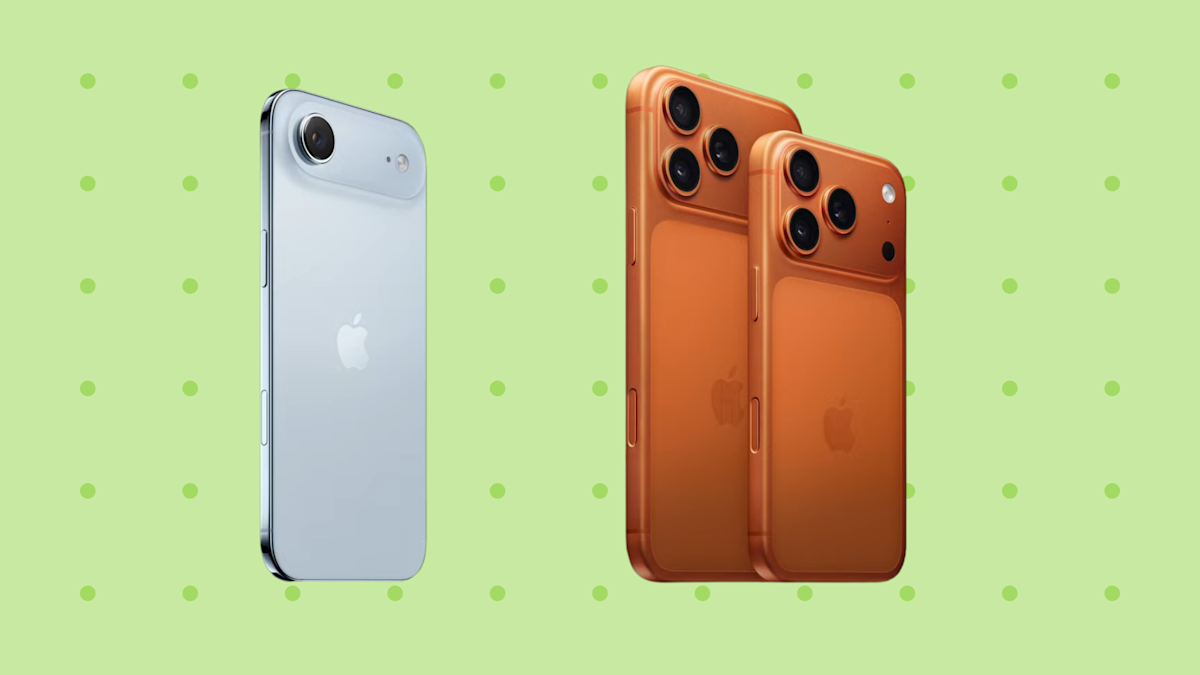iPhone Air vs. iPhone 17 Pro: Feature and Price Showdown

Key Points
- Both phones use the A19 Pro chip and share core features like ProMotion displays and MagSafe.
- iPhone Air is thinner (5.6 mm) and lighter (5.82 oz) than iPhone 17 Pro (8.75 mm, 7.27 oz).
- iPhone 17 Pro offers a triple‑camera 48 MP system with ultra‑wide, wide, and telephoto lenses; iPhone Air has a single 48 MP camera with limited zoom.
- Battery life: up to 27 hours video on Air vs. 33 hours on Pro; charging to 50 % in 30 min vs. 20 min.
- Pricing starts at $999 for Air and $1,099 for Pro, with higher storage tiers costing more.
- Optional MagSafe battery pack can extend Air’s video playback but adds bulk.
- Choose Air for a slimmer design and lower price; choose Pro for top‑tier camera and battery performance.
Apple’s latest lineup pits the ultra‑thin iPhone Air against the flagship iPhone 17 Pro. Both run the same A19 Pro chip and share many core features, but they diverge in size, camera systems, battery capacity and price. The Air emphasizes a slim titanium body and lighter weight, while the Pro offers a triple‑camera array, higher video frame rates and longer video playback. Understanding these trade‑offs helps buyers decide whether they prioritize style and cost or full‑spec performance.
Design and Build
The iPhone Air is marketed as Apple’s thinnest phone, measuring just 5.6 mm thick and weighing about 5.82 ounces (165 grams). Its titanium casing gives it a lightweight feel. In contrast, the iPhone 17 Pro is thicker at 8.75 mm and heavier at 7.27 ounces (206 grams) with an aluminum chassis. The Air’s larger 6.5‑inch Super Retina XDR display is slightly bigger than the Pro’s 6.3‑inch panel, though both use the same high‑refresh ProMotion technology and color accuracy.
Camera Systems
The most pronounced difference lies in the rear cameras. The iPhone 17 Pro features a triple‑camera “Pro Fusion” system, each sensor at 48 MP, delivering ultra‑wide, wide and telephoto focal lengths with up to 8× optical zoom, macro capabilities, and advanced video options such as 4K Dolby Vision at 120 fps, ProRAW, and ProRES. The iPhone Air relies on a single 48 MP Fusion camera that offers only a 2× optical zoom and lacks ultra‑wide and telephoto lenses. Both models share an 18 MP front‑facing Center Stage camera with dual‑capture capability.
Battery Life and Charging
Apple claims the iPhone Air can provide up to 27 hours of video playback and reaches a 50 % charge in roughly 30 minutes. The iPhone 17 Pro is rated for up to 33 hours of video playback and can charge to 50 % in about 20 minutes with a 40‑watt charger. Apple also offers an optional MagSafe battery pack for the Air that extends video playback to around 40 hours, though it adds bulk and cost.
Pricing Structure
The iPhone Air starts at $999 for the base storage tier, with higher capacities priced at $1,199 for 512 GB and $1,399 for 1 TB. The iPhone 17 Pro begins at $1,099 for the 256 GB model, $1,299 for 512 GB and $1,499 for 1 TB. Both devices are available in multiple color options, with the Air offering lighter shades and the Pro featuring more traditional finishes, including a bold Cosmic Orange.
Choosing Between the Two
Buyers who value a sleek, lightweight form factor and a lower entry price may lean toward the iPhone Air, accepting compromises in camera versatility and battery endurance. Those who need the most advanced photography tools, longer video playback, and faster charging are likely to favor the iPhone 17 Pro model, despite its higher cost and bulkier build. The decision ultimately depends on whether style and cost or full‑spec performance are the priority.